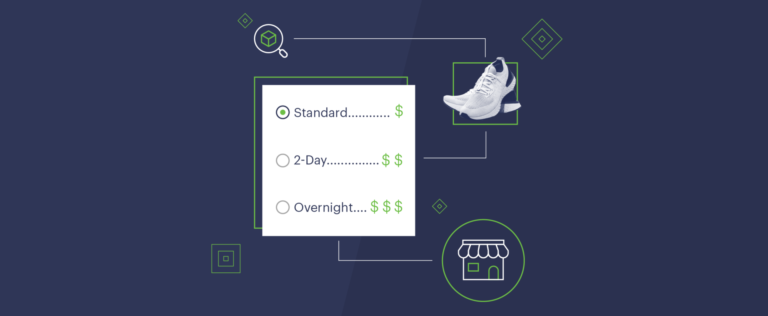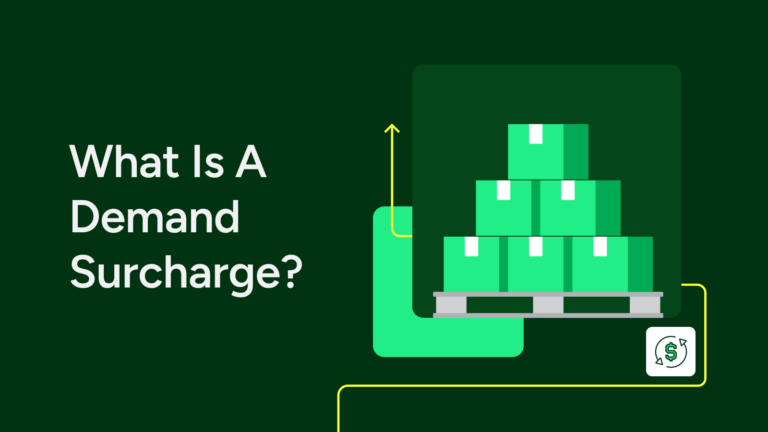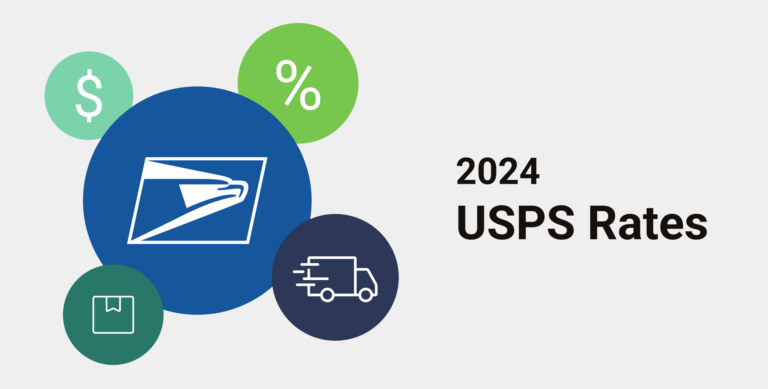Customer Expectations Around Delivery Options

The ecommerce retail space has come a long way in recent years. Just a few years ago, delivery expectations were low – customers expected to wait up to 10 days to have an item delivered. But slowly, expectations started changing. First, standard delivery options shortened to 3-4 days; then, expedited 2-day or next-day shipping raised the bar and are now the norm. Today, online shoppers want fast, cheap (or free) shipping options. This growing demand in customer delivery expectations has increased competition in the ecommerce space as retailers try to find expedited shipping at low cost.
Amazon is leading the pack with multiple free expedited shipping options for Amazon Prime customers. This has left other retailers with no choice but to look for faster and cost-effective ecommerce shipping solutions to navigate the fierce competition and stay ahead of the curve when it comes to managing customer expectations.
In this article, we’ll look at how consumer delivery expectations in ecommerce are changing, the benefits and challenges of these expectations for retailers, and some ways retailers can manage these. For more information on the impact of shipping on customer conversion, satisfaction, download our free research guide, Last Touch, Lasting Impact.
Growing Consumer Expectations in Ecommerce
Consumer delivery expectations for ecommerce are changing quickly and becoming more demanding by the day. One reason for this is the increasing competition in the ecommerce retail space. For ecommerce retailers, it’s crucial to understand how managing customer expectations can help your business.
Companies like Amazon continue to push the envelope with competitive faster delivery timelines. Today, Amazon offers free same-day delivery, next-day delivery, and 2-day delivery with their Prime membership. Now, customers have come to expect the same from other retailers, who have no choice but to implement similar systems if they want to stay competitive.
Another reason behind the change in consumer delivery expectations is because of COVID-19. As more and more people stay home, they’re increasingly shopping online to get what they would normally get in store. Our research shows that in 2020 online shoppers were willing to wait longer for shipment and they were also willing to pay more for express shipment.
The Benefits & Challenges of Deliveries for Online Retailers
Giving customers more control over the delivery process comes with several benefits to retailers, most significantly, the better managing of customer expectations. But, of course, it also has its fair share of challenges. Here are a few things to consider when deciding whether to implement a more customer-driven delivery process:
Advantages to Retailers
- Brand loyalty: Many consumers will abandon a brand if they have to wait a long time for deliveries. Faster, low-cost shipping will mean more repeat customers.
- Lower cart abandonment: 80% of online transactions result in cart abandonment. Offering free or low-cost shipping will help retailers realize higher conversion rates.
- Improved upselling: Giving buyers more control over their delivery timings means that they will be more likely to shop online, helping retailers increase conversions and sales.
- Stay ahead of the competition: A retailer providing faster delivery and multiple shipping options at low cost has a real chance to stand out from the competition.
- Better delivery experiences: Giving customers more control over deliveries, like the ability to correct a wrong address or reroute a package to a more convenient address, will decrease instances of failed delivery attempts and improve the overall delivery experience.
Disadvantages to Retailers
- Supply chain challenges: In an attempt to meet consumer delivery expectations, retailers have to endure the vagaries of traffic issues, third party couriers, and bad weather. All these make it harder for them to deliver on time, and there’s often not much you can do to mitigate this.
- High cost for retailers: Faster shipping for online retailers comes at an extra cost. Most customers have come to expect expedited deliveries but are not willing to pay more for this. That means retailers may have to grapple with lower profit margins to meet consumer delivery expectations.
- Negative impact on businesses: After a negative delivery experience, 83% say they won’t shop with a retailer again. That means late or slow deliveries will hurt retailers because they’re unable to keep up with consumer delivery expectations.
- Hard to deliver during peak seasons: ecommerce retailers experience order spikes and logistics challenges during holidays or uncertain times like the current COVID-19 pandemic, making it hard to deliver on their promise for faster shipping.
How to Manage Customer’s Shipping Expectations
There are several measures that retailers can put in place to manage consumer delivery expectations and give them a certain degree of control over the delivery process. Here’s a rundown.
Offer multiple shipping options
One way to manage your consumer delivery expectations is to offer multiple shipping options such as same-day, next-day, two-day, and standard shipping. This gives them more control over the delivery speed and price at which they want their packages delivered.
Offer free shipping
You can manage your consumer delivery expectations by offering free shipping over a certain spend. Your buyers will not expect very speedy deliveries with free shipping; they will likely be willing to wait for an extra day or two to receive their package. Though this is an expensive tactic, you can build part of the shipping cost into your selling prices to mitigate it.
Take advantage of delivery incentives
Using time and price delivery incentives is another excellent way to manage consumer delivery expectations, especially during the holidays. An example of a time-sensitive incentive might be something like, “Order by December 15th to receive your package before Christmas.” A popular example of a price incentive is “Free shipping for purchases above $100.” This will help give your buyers a semblance of control while managing their expectations.
Show delivery dates
For the sake of your customers’ convenience, you should display delivery timelines and prices at checkout so they can choose the most appropriate shipping option. This will help then know what to expect before they make the purchase.
Share tracking information with your customers
Another way to manage consumer delivery expectations is to share tracking information through automated messages; they can see where their package is and when it will be arriving. This will help mitigate any anxiety on the customer’s side and reduce pressure on your customer service team.
Ship from multiple locations
When you partner with wholesalers or warehouses in strategic locations, you can ensure that your orders don’t have to travel as far to reach customers around the world. This not only lowers your shipping costs but also guarantees faster delivery times.
Display cut-off times
Displaying cut-off time for each shipping option is a great way to manage consumer delivery expectations. Let your buyers know the latest they can make orders to get faster delivery times for same-day, next-day, or overnight shipping.
Take charge
Though it may be your couriers’ fault, your customers will always hold you accountable for any delivery issues because they bought the product from you. You should take responsibility and resolve any problems with the courier as soon as you’re aware of them. Never leave your buyers to chase their order up or incur extra costs when you or your courier have made a mistake.
Streamline the shipping process
A big part of managing consumer delivery expectations involves streamlining your shipping process to avoid delays and ensure faster delivery. Integrating data with your shipping partners, improving your order processing systems, and having active customer support are some of the things you can do to meet your buyers’ expectations.
Keep Your Customers Happy with Better Deliveries
The ecommerce retail space is now well established and more customers are finding it increasingly convenient to shop online. That means consumer delivery expectations for faster shipping at no extra costs, along with the need for delivery flexibility, will only continue to grow.
By taking the above proactive steps to enhance consumer delivery expectations, you’ll be able to effectively manage customer expectations and keep them happy. Don’t forget that ShipStation can help – reach out to our support team and sign up for a free account now!


